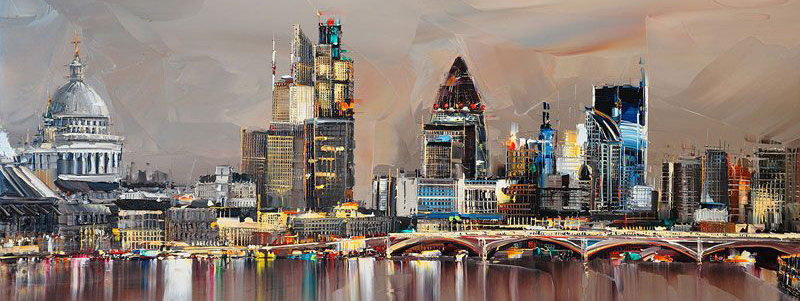A dive into Hampstead's natural lakes
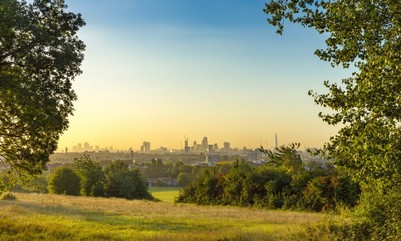 The inhabitants of Hampstead have always strived to preserve the local heathland from speculators, and the end result is that its eight hundred and twenty-five acres have not changed much since the days when Constable used to create paintings of them. The triangular signposts warning drivers about the presence of deer prove that the wildlife continues to have room to flourish. Wild orchids no longer bloom in the woods as they did in the Seventeenth Century, but the strongly-scented hawthorn still continues to thrive. Various types of spontaneously growing flowers cover the fields and the undergrowth: wood sorrel, buttercups, celandine, daisies, and the list goes on... In the Autumn, blackberries can be picked. Also the architectural landscape has remained more or less intact, starting with the building which now hosts the Fitzjohn school, which was once a place used for housework training for the daughters of soldiers who lost their lives during the Crimean war. Hampstead has always been inhabited by artists and intellectuals, who cherished its narrow, steep, and winding streets, overlooked by houses dating back to different periods, all well-harmonized in their crayon-like hues.
The inhabitants of Hampstead have always strived to preserve the local heathland from speculators, and the end result is that its eight hundred and twenty-five acres have not changed much since the days when Constable used to create paintings of them. The triangular signposts warning drivers about the presence of deer prove that the wildlife continues to have room to flourish. Wild orchids no longer bloom in the woods as they did in the Seventeenth Century, but the strongly-scented hawthorn still continues to thrive. Various types of spontaneously growing flowers cover the fields and the undergrowth: wood sorrel, buttercups, celandine, daisies, and the list goes on... In the Autumn, blackberries can be picked. Also the architectural landscape has remained more or less intact, starting with the building which now hosts the Fitzjohn school, which was once a place used for housework training for the daughters of soldiers who lost their lives during the Crimean war. Hampstead has always been inhabited by artists and intellectuals, who cherished its narrow, steep, and winding streets, overlooked by houses dating back to different periods, all well-harmonized in their crayon-like hues.Virginia Woolf once defined them as small boxes, and added "if houses have their voices and places their seasons, it is always Spring in Hampstead..." Heath Street is the main street which passes through Hampstead. Here, time has preserved the red mailboxes from the Victorian period, with decorated miniature roofs, and all shaped like pagodas. Hampstead Square presents some beautiful buildings dating back to the Seventeenth Century, whereas on High Street, stands the eighteenth-century Hampstead Brewery, with its ornate entrance. At the end of Church Row, we find the old church of St John's, with its tall tower. It was in this area that the architect Walter Gropius once lived, in the Isokon Building in Lawn Road, constructed in cement and featuring balconies which are as long as the facade itself. It was built in 1934 and included apartments equipped with minute cooking areas and a vast central kitchen from which meals would be sent, via a serving hatch.
Also Agatha Christie had made use of it, seeing as she too had lived here. The sculptors Henry Moore and Barbara Hepworth opened their studios in this neighbourhood and turned it into a focal point for British Sculpture. The writer Evelyn Waugh spoke of the area as a social indicator. In fact, if one was invited there by someone residing there, it meant that the attempts at social climbing had been successful.
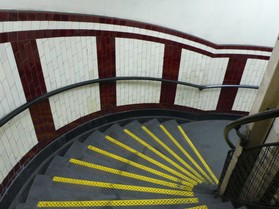 Record-breaking stations - The station's first record is that of being the deepest in London, with as many as three hundred and twenty steps. The bus station in South End Green, instead, wins the record for having the most attractive toilets in the whole city. It is in fact almost worth taking a trip there solely for the purpose of visiting the bathroom. It was built in 1897, following the classical style of the epoch, with ample wooden cubicles and urinals decorated with green and beige Doulton tiles, which form elaborate shapes. The urinals are enclosed by wooden panels on each side. It is a true jewel of architecture, and is classified amongst the monuments under public protection. Another record should be awarded to the bus service known as Route 24, which has connected this area with West End and Victoria for over a century, and which passes very frequently.
Record-breaking stations - The station's first record is that of being the deepest in London, with as many as three hundred and twenty steps. The bus station in South End Green, instead, wins the record for having the most attractive toilets in the whole city. It is in fact almost worth taking a trip there solely for the purpose of visiting the bathroom. It was built in 1897, following the classical style of the epoch, with ample wooden cubicles and urinals decorated with green and beige Doulton tiles, which form elaborate shapes. The urinals are enclosed by wooden panels on each side. It is a true jewel of architecture, and is classified amongst the monuments under public protection. Another record should be awarded to the bus service known as Route 24, which has connected this area with West End and Victoria for over a century, and which passes very frequently.HAMPSTEAD HEATH
UNDERGROUND: HAMPSTEAD HEATH
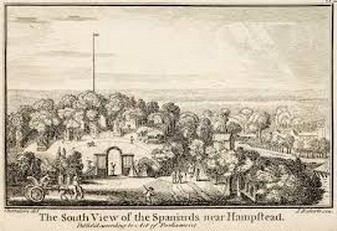 Hampstead Heath, which can be reached by heading up Heath Street, is the biggest of the ancient parks in London, and is part of the capital's line of horizon. It is also one of the highest spots, sitting above a sandy ridge and a geological marine formation which contains a number of fossils. The latter indicate that there must have been a moderately warm temperature there in the past, with tropical vegetation. From 1808 to 1814, Hampstead Heath was equipped with a telegraph station, which provided communication between the London Admiralty and the ships in the harbour of Great Yarmouth. At the western extremity of Hampstead Heath lies Golders Hill Park, which makes for an extremely pleasant visit, and includes the Flower Garden, the arbour, and the beautiful games park for children, where one can find clowns, magicians, and illusionists during the summertime. There are many parks similar to this one in Hampstead, in fact, just a short distance ahead, upon Inverforth.
Hampstead Heath, which can be reached by heading up Heath Street, is the biggest of the ancient parks in London, and is part of the capital's line of horizon. It is also one of the highest spots, sitting above a sandy ridge and a geological marine formation which contains a number of fossils. The latter indicate that there must have been a moderately warm temperature there in the past, with tropical vegetation. From 1808 to 1814, Hampstead Heath was equipped with a telegraph station, which provided communication between the London Admiralty and the ships in the harbour of Great Yarmouth. At the western extremity of Hampstead Heath lies Golders Hill Park, which makes for an extremely pleasant visit, and includes the Flower Garden, the arbour, and the beautiful games park for children, where one can find clowns, magicians, and illusionists during the summertime. There are many parks similar to this one in Hampstead, in fact, just a short distance ahead, upon Inverforth.Close, one can reach Hill Garden, a lovely English-style garden with a path flanked by painted Dorian pillars, as well as a number of small temples and pagodas, and lakelets surrounded by trees. It is an oasis of peaceful contemplation. In the north-western area, towards Golders Green, just opposite Hampstead Way, stands Wyldes Farm, at the boundary of the wood. The farm is built in dark bricks, and has an enormous roof bearing two rows of dormers, which have been inserted in order to give the farm the appearance of a granary.
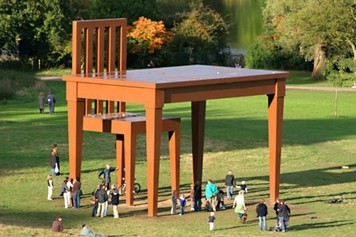 The writer's desk - Giancarlo Neri, renowned for the carpet made up of ten thousand sphere-shaped lamps lain out on the terrain of Circo Massimo in Rome, created a nine-meter-tall desk with a chair of equal proportions for this park. It was installed in the Heath park in August 2005. The sculpture is called The Writer. In Easter and during the holidays, various trade shows and events take place. There are fairgrounds for the children, as well as donkeys, much like it was in Dickens' time. Concerts happen on the hill of Kenwood House, but also reading events where poems and prose alike are recited, conferences concerning scientific subjects, and recitals exhibiting the harpsichords of Fenton House. Hampstead is not merely famous for its wide areas of greenery and woodland or the harmonious architecture of its houses, but also for its old traditional pubs. The Holly Brush is one of them. Until a short while ago, it was still dependent on gas for lighting. Another old pub is the Spaniards Inn, where the bandit Dick Turpin had once sought refuge. Changes have been few and far since in 1852 Ford Madox Brown started painting a magnificent masterpiece of his here, known as Work. His intention was that of portraying the entirety of the reality which made up the Victorian society. Each character represents a particular different social class. The painting also reveals that the place, which depicts The Mount, has not changed much at all. Even the original gas lamps are still standing, along with the picket fence and the river bank, which the people in the painting are leaning on.
The writer's desk - Giancarlo Neri, renowned for the carpet made up of ten thousand sphere-shaped lamps lain out on the terrain of Circo Massimo in Rome, created a nine-meter-tall desk with a chair of equal proportions for this park. It was installed in the Heath park in August 2005. The sculpture is called The Writer. In Easter and during the holidays, various trade shows and events take place. There are fairgrounds for the children, as well as donkeys, much like it was in Dickens' time. Concerts happen on the hill of Kenwood House, but also reading events where poems and prose alike are recited, conferences concerning scientific subjects, and recitals exhibiting the harpsichords of Fenton House. Hampstead is not merely famous for its wide areas of greenery and woodland or the harmonious architecture of its houses, but also for its old traditional pubs. The Holly Brush is one of them. Until a short while ago, it was still dependent on gas for lighting. Another old pub is the Spaniards Inn, where the bandit Dick Turpin had once sought refuge. Changes have been few and far since in 1852 Ford Madox Brown started painting a magnificent masterpiece of his here, known as Work. His intention was that of portraying the entirety of the reality which made up the Victorian society. Each character represents a particular different social class. The painting also reveals that the place, which depicts The Mount, has not changed much at all. Even the original gas lamps are still standing, along with the picket fence and the river bank, which the people in the painting are leaning on.GOLDFINGER, THE UNWILLING PROTAGONIST
2, WILLOW ROAD
UNDERGROUND: HAMPSTEAD
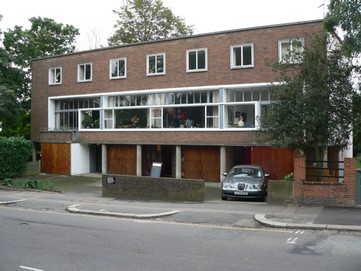 Ernő Goldfinger was a Hungarian Jewish architect, as well as being a designer of furniture. In 1921, after the fall of the Austro-Hungarian Empire, he first moved to Paris, then London. In 1939, after getting married, he built this house for himself. It is a modern building built in cement and bricks. The local residents were at first strongly opposed to its construction, then later, seeing the futility of their opposition, forced him to at least cover the cement with bricks, so as to harmonize its look with that of other nearby houses, which had a more traditional appearance. Furthermore, in order to build this parallelepiped of a house, Goldfinger demolished a row of traditional cottages. Ian Fleming, who was one of those opposed to the demolition, decided he would name the villain of his James Bond book after his antagonist, thus Goldfinger. The architect initially wanted to take him to court, but ended up giving up on it.
Ernő Goldfinger was a Hungarian Jewish architect, as well as being a designer of furniture. In 1921, after the fall of the Austro-Hungarian Empire, he first moved to Paris, then London. In 1939, after getting married, he built this house for himself. It is a modern building built in cement and bricks. The local residents were at first strongly opposed to its construction, then later, seeing the futility of their opposition, forced him to at least cover the cement with bricks, so as to harmonize its look with that of other nearby houses, which had a more traditional appearance. Furthermore, in order to build this parallelepiped of a house, Goldfinger demolished a row of traditional cottages. Ian Fleming, who was one of those opposed to the demolition, decided he would name the villain of his James Bond book after his antagonist, thus Goldfinger. The architect initially wanted to take him to court, but ended up giving up on it.On the inside, there are a number of vast uninterrupted spaces, occupied by modern-style furniture - which still seem such today - designed by Goldfinger himself. Everything is as he left it, which gives us an idea of the architect's everyday life, beyond the aspect of his work alone. The guided visits start at the garage, where a video is projected, then one ascends the spiral staircase and reaches many rooms of different colours: red, blue, and yellow.
Goldfinger is known for being the first architect to ever construct extremely high towers with living quarters, the most famous of which is Trellick.
KENWOOD HOUSE
HAMPSTEAD LANE
UNDERGROUND: GOLDER'S GREEN
BUS 210 FOR HAMPSTEAD LANE
Kenwood House hosts one of the most important collections of paintings in the capital. In 1764 William Murray, count of Mansfield, a great patron and bibliophile, had assigned the architect Robert Adam to build a villa for him, which was to have a facade made in plaster and bricks. Adam also implemented a wooden porch and two lateral wings, which hold the library. The Great Room has an elongated shape, as well as a ceiling with a concave moulding. In the dining room, many important paintings hang on the walls.
There is a self-portrait by Rembrandt from 1663, where the artist has painted himself with a bereaved but challenging expression on his face, and in a pose which is full of dignity and inner fortitude. The fur lining of his gown is painted somewhat lavishly. Another important painting is The Guitar Player by Vermeer. There is also a vast collection of paintings by Angelika Kauffmann.
The house stands within an area which has an Arcadian atmosphere about it, at the top of a lush green hill, from where it dominates over the valley below and the centuries-old trees which grow there, and which it is possible to climb. In fact, it is common to see people clambering up and down the trees, and should not be cause for alarm.
At the beginning of the Spring, the fields in the park are an explosion of daffodils, whereas in May rhododendrons start to bloom.
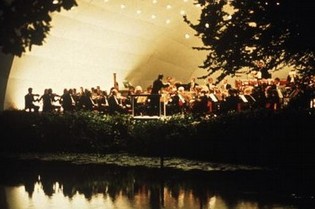 Throughout the Summer, musical performances and concerts are held along the banks of the little lake. The bridge has been built in such a way as to suggest the flowing of a river beneath it. The walk along its banks is a way to explore the park. One might, for example, pass below the trellis arbour by the house, descend the stairway which leads to the grassy banks of the lake, proceeding along the fence that encloses the pastures, and from here look back up at the house to admire the sight of the light reflecting off its facade. From here, one can cross the bridge on the right side of the lake, follow the path through the woods to get to the Brew House Café, located at the rear of the house, in the old stable. There is also an enclosed garden encircled by a wall.
Throughout the Summer, musical performances and concerts are held along the banks of the little lake. The bridge has been built in such a way as to suggest the flowing of a river beneath it. The walk along its banks is a way to explore the park. One might, for example, pass below the trellis arbour by the house, descend the stairway which leads to the grassy banks of the lake, proceeding along the fence that encloses the pastures, and from here look back up at the house to admire the sight of the light reflecting off its facade. From here, one can cross the bridge on the right side of the lake, follow the path through the woods to get to the Brew House Café, located at the rear of the house, in the old stable. There is also an enclosed garden encircled by a wall.THE OBSERVATORY
LOWER TERRACE
WHITESTONE POND
The Observatory has been here since 1910, after the Hampstead Scientific Society, founded by P.E. Vizard, decided upon its installation. The telescope which has been used here was built in 1898 by Thomas Cooke of York. Near the Observatory, there is a weather station, which holds the record for being operative in recording the meteorological conditions of the country since long before any other station of its kind.
The society contributes towards promoting scientific knowledge by holding conferences in the church of St John. During the warmer seasons, the clearer evenings offer the chance to observe the sky.
Also near the Observatory, lies Whitestone Pond, where the horses which drag carts up the hill are allowed to stop to drink and rest.
Following the causeway of Spaniards Road, one reaches the basins where the water gathers. They are not all that deep and their bottom is entirely covered in marshy vegetation. Their natural borders have been altered to some extent, due to the fact that reclamation works, which were necessary for urbanisation, and the expansion of human activities have both greatly reduced their surface area. However, their survival is important, as it creates an essential biodiversity. The plant life which grows on the banks of a river and the animals that live there are typical of such habitats and cannot be found elsewhere.
A tall pole standing nearby the basins marks the highest point of Hampstead Hill. On Preacher's Hill, just west of the basins, along East Heath Road, there is a boundary stone. The London jurisdiction once used to start from here. The writing on the stone tells us that this is the County Council Boundary which is written in raised letters. Today it is used by runners for stretching poses or for tying up their shoelaces, as it is exactly the right height.
1908 Olympics - London is the first city to host the Olympic games for the third time. In 1908, in order to demand that the Olympic games be held here, families would go out into the street in Hampstead and indefinitely hold donkey parades, as well as contests such as "tug of war", arm wrestling, and melee fights.
THE FERROUS WATERS OF WELL WALK
UNDERGROUND: HAMPSTEAD HEATH
There was a time when people would often pay a visit here or, alternatively, to the thermal centre of Bath, or the Royal Turnbridge Wells. In 1700, the administrative company for the well started to advertise the medicinal qualities of chalybeate waters, meaning water containing great quantities of iron. However, in 1800, it went out of fashion, in favour of other centres and the spa was demolished in 1882. Only the fountain on Well Walk was left standing, just in front of a house known as Wellside, built in 1892 upon the site of the old pump.
In the period around 1700, the walks here were made even more pleasurable by the installation of a music gazebo. There was a pavilion with a great dance-floor where one could go to dance. After Hampstead started going out of fashion as a thermal station, however, the ballroom started to be populated by unsavoury characters, and was transformed into a chapel. It was in a house on this very street that John Keats assisted his brother, who had contracted tuberculosis, during the last months of his life, in late 1818. Unfortunately he ended up contracting the disease from his brother.
The cottage at number 40 hosted the painter John Constable during the last years of his life. The abundance of weeping willows makes the street particularly picturesque.
FLASK WALK
UNDERGROUND: HAMPSTEAD
The literal meaning of its name is a testimony to the importance of the fountain which once stood here. Part of the street is pedestrian, and it is very evocative to walk here at night in order to reach Black Lane and its little single-floor houses with their red, white, and brown hues. The Bath House is a building which has been declared of architectural interest and was converted into expensive apartments in 1981.
The pediment bears a long phrase with the words: "The Wells and Campden Baths and Wash-Houses 1888". In 1855, Stanfield House, at number 7, Gardnor Place, became the location for the Hampstead library, with a collection of books on the subjects of literature and science. John Constable was one of its first members. At number 14 on this very street stands the Flask Pub.
JACK STRAW'S CASTLE
12, NORTH END WAY
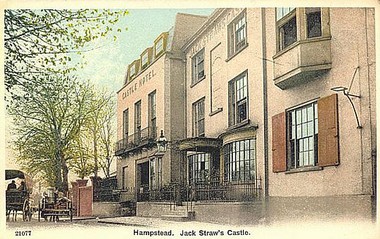 The building, which stands at the top of a hill, has held a pub which is amongst the oldest and at the greatest altitude in all London. The legendary story of the character known as Jack Straw is most interesting. His actual existence is not certain, but it has become an essential part of the tales concerning the peasants' rebellion. He is even mentioned in the Canterbury Tales as the ringleader of a revolt against foreign workers, specifically the Flemish. According to folklore, it is said that he led an unfortunate crowd of farmers from Essex, who wanted to rebel against the king and the local landowners, and was later sentenced to death in 1381. The pub has been dedicated to him because it is told that it was on that very roadside in front of the pub that he had harangued the crowd from atop a cart carrying straw, which later became famous as Jack Straw's Castle. The building was converted into a series of apartments and on the ground floor, where there was a restaurant, there is now a fitness centre.
The building, which stands at the top of a hill, has held a pub which is amongst the oldest and at the greatest altitude in all London. The legendary story of the character known as Jack Straw is most interesting. His actual existence is not certain, but it has become an essential part of the tales concerning the peasants' rebellion. He is even mentioned in the Canterbury Tales as the ringleader of a revolt against foreign workers, specifically the Flemish. According to folklore, it is said that he led an unfortunate crowd of farmers from Essex, who wanted to rebel against the king and the local landowners, and was later sentenced to death in 1381. The pub has been dedicated to him because it is told that it was on that very roadside in front of the pub that he had harangued the crowd from atop a cart carrying straw, which later became famous as Jack Straw's Castle. The building was converted into a series of apartments and on the ground floor, where there was a restaurant, there is now a fitness centre.THE HAMPSTEAD AND BURGH HOUSE MUSEUM
NEW END SQUARE
UNDERGROUND: HAMPSTEAD
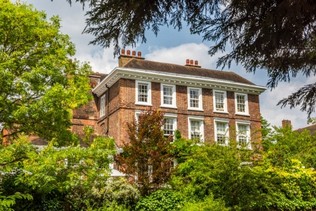 The building which hosts the museum and is found in the heart of Hampstead was built in 1704 for a Quaker family. At the start of the Nineteenth Century it was purchased by the musicologist and reverend known as Allatson de Burgh, whose name it still bears to date. It currently hosts an art centre, which organizes concerts, recitals, and conferences.
The building which hosts the museum and is found in the heart of Hampstead was built in 1704 for a Quaker family. At the start of the Nineteenth Century it was purchased by the musicologist and reverend known as Allatson de Burgh, whose name it still bears to date. It currently hosts an art centre, which organizes concerts, recitals, and conferences.The museum is located on the first floor of the house. It acts as a guide through the local history of the area. There are paintings by Constable, who painted the local heath landscapes. There is an Isokon chair as well as some Bauhaus furniture, the first mute film of London, and some memoirs by the poet Keats. The house also includes a music room clad in panels.
The building is surrounded by a charming terraced garden. In the summer the tables of the tea room are moved here from the basement. 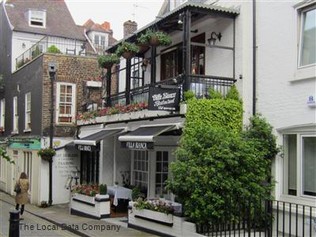 From the garden one can enjoy a lovely view of Hampstead Wells.
From the garden one can enjoy a lovely view of Hampstead Wells.
 From the garden one can enjoy a lovely view of Hampstead Wells.
From the garden one can enjoy a lovely view of Hampstead Wells.At number 1, Perrins Court stands Villa Bianca, which now hosts an Italian restaurant. We mention it for its interesting yet bizarre history. The little villa was built by the chimney sweep Henry Kippin, who was in charge of the chimney maintenance at Hampstead.
THE VALE OF HEALTH
UNDERGROUND: HAMPSTEAD
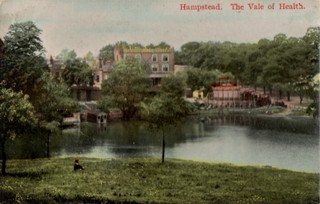 In the Eighteenth Century, the Vale of Health was a malaria-ridden marsh, the undisputed domain of a thick and tangled plant life, mostly made up of tall-standing canes. In 1777, the water company decided to dry out the area, which went on to become a place for elegant residential quarters.
In the Eighteenth Century, the Vale of Health was a malaria-ridden marsh, the undisputed domain of a thick and tangled plant life, mostly made up of tall-standing canes. In 1777, the water company decided to dry out the area, which went on to become a place for elegant residential quarters. 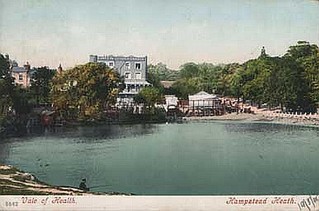 A long time ago, this was perhaps a shallow little lake, with rich sources providing water to the watercourses downstream. The region was scarcely inhabited due to the fact that it was infested with malaria, as well as being difficult to travel through. Wagons and carts would only pass through during the drier seasons. Later on, the complete reclamation, the perpendicular channels aimed at draining the lower area, and the collection pits all improved the environment.
A long time ago, this was perhaps a shallow little lake, with rich sources providing water to the watercourses downstream. The region was scarcely inhabited due to the fact that it was infested with malaria, as well as being difficult to travel through. Wagons and carts would only pass through during the drier seasons. Later on, the complete reclamation, the perpendicular channels aimed at draining the lower area, and the collection pits all improved the environment.SIGMUND FREUD'S MUSEUM
20 MARESFIELD GARDENS
UNDERGROUND: FINCHLEY ROAD
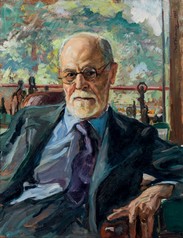 It was in this very house that Sigmund Freud spent the last years of his life in exile, in order to escape the Nazi threat. In crossing the Channel he had imagined himself in the role of William the Conqueror, during his disembarkation at Pevensey in 1066. Freud had arrived here on 27th September, 1938. He had always been interested in art, literature, philosophy, archaeology, and history. It was also here that he received, amongst others, the surrealist painter Salvador Dalì. The house has been converted into a museum; the sofa has been covered by a Persian rug that comes from the Berggasse of Vienna, upon which patients would lay down and give voice to their "free associations".
It was in this very house that Sigmund Freud spent the last years of his life in exile, in order to escape the Nazi threat. In crossing the Channel he had imagined himself in the role of William the Conqueror, during his disembarkation at Pevensey in 1066. Freud had arrived here on 27th September, 1938. He had always been interested in art, literature, philosophy, archaeology, and history. It was also here that he received, amongst others, the surrealist painter Salvador Dalì. The house has been converted into a museum; the sofa has been covered by a Persian rug that comes from the Berggasse of Vienna, upon which patients would lay down and give voice to their "free associations". The writing desk is populated by statuettes, such as a copy of the goddess Minerva. Freud had asked Maria Bonaparte to smuggle it out of Austria, should the rest of his collection of Greek and Roman statues ever be confiscated. Today these figurines show themselves in all their glory in the display case and contribute towards giving the feeling of a place where one may leave behind the hectic life of the present day, as if one had entered into a parallel dimension.
The famous sofa is covered by a red and blue five-sided rug, woven in Western Iran. After Freud's death on 23rd September 1939, the house was lived in for a while by his daughter Anna, a child psychologist, who continued to use the same study, and placed a loom there, which she enjoyed working on. Also, she had taken up the hobby of knitting.
FENTON HOUSE
HAMPSTEAD GROVE
UNDERGROUND: HAMPSTEAD
The house stands atop Windmill Hill and was built around 1693. It is a perfect example of Queen Anna style architecture, and now belongs to the National Trust. It hosts a collection of paintings, porcelain, furniture, and ancient musical keyboard-played instruments, especially dating back to the XVII and XVIII centuries. Amongst them is a harpsichord dating back to 1612, which was used by Händel. There are also spinet pianos, clavichords, and other types of pianos. The instruments are freely available to music students who wish to practice.
The splendid garden, enclosed by an extremely tall wall upon which roses and clematis clamber upward, is well kept and also contains flowerbeds of healing plants and herbs. The paths are bordered by flowers, and lead to an old orchard full of gnarled and twisting trees. Some wonderful concerts can be witnessed here during the Summer. At the northern extremity of the house, along Admiral's Walk, stands Admiral's House, a tall, white building, which became famous from a painting by Constable.
The work of the great English naturalist painter, the first to ever carry out oil-paintings outdoors, is exhibited at the Tate Britain. The house can be seen in the background, high up on the hill, partially hidden by very tall trees. Farmers and their cows are portrayed in the foreground. Constable would paint rural scenes exactly as he saw them, and became famous because he managed to depict the reality of an age and pass it on for future generations to witness. Alone and surrounded by nature, he would reproduce the details of what he saw on his canvas.
The house has earned its name due to the fact that during the reign of King George III it was occupied by the eccentric naval officer Fountain North. He had in fact ordered two bridges to be built on the roof and had had cannons installed on it, which were to fire as a salute on the king's birthday, or to celebrate naval victories. He even had a cabin built in the shape of a ship's stern. It was rumoured that an underground tunnel passed beneath the garden which communicated with the Heath, and had been used by Dick Turpin as an escape route. The house bears a brown plaque which tells us that the architect George Gilbert Scott once lived here. On Holly Mount, one can also come across the famous pub, Holly Brush, one of the most ancient pubs in Hampstead, built in 1643, and converted from the stables of Romney's House. It was frequented by Dr Johnson and Boswell. Upon witnessing its oak floor, the ornamental plastering, the wooden panels affixed to the walls, and the lively flames of the fireplace, it truly feels like going back in time.
KEATS HOUSE
KEATS GROVE
UNDERGROUND: HAMPSTEAD
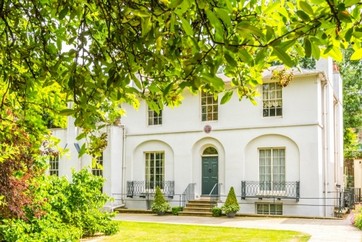 The poet moved to this house in Regency at the beginning of the Nineteenth Century after the death of his brother, and spent the years going from 1818 to 1820 here. Ode to a Nightingale was written in the front garden, beneath the plum tree. At the time there were two houses standing right next to each other. In one of them lived the poet Keats with a friend called Charles Armitage Brown, whereas the other was the home of the widow Brawne and her daughter Fanny, whom Keats eventually got engaged to. A small box contains the engagement ring made in almandine, which she wore until her death, even after getting married.
The poet moved to this house in Regency at the beginning of the Nineteenth Century after the death of his brother, and spent the years going from 1818 to 1820 here. Ode to a Nightingale was written in the front garden, beneath the plum tree. At the time there were two houses standing right next to each other. In one of them lived the poet Keats with a friend called Charles Armitage Brown, whereas the other was the home of the widow Brawne and her daughter Fanny, whom Keats eventually got engaged to. A small box contains the engagement ring made in almandine, which she wore until her death, even after getting married.In 1838, the actress Eliza Chester joined up the houses, which in 1925 were transformed into a museum commemorating Keats. In 1974, the house was furnished with a few items of furniture, both simple and elegant, conveying a feeling of warmth and cosiness, as if the poet were still present amongst his books and manuscripts.
The house still has the same window fixtures and an iron bar which was used by Keats for blocking the shutters. On the writing desk, next to Shakespeare's bust and the famous Bard's book of sonnets and notes he had written as a student of medicine, sits his inkwell. A display cabinet holds a few letters of his, along with the first three editions of his poems.
On the first floor, there is a bedroom where the poet diagnosed his illness and predicted his own demise. Hanging on the wall is a portrait of him on his deathbed carried out by Joseph Severn. In the garden, which goes by the name of Keats Grove, a mulberry still stands today, which was here in the day of the poet. This type of tree is not native to the island, but began being cultivated from the Sixteenth Century onwards. On this land, there were also fruit-bearing trees which were probably once part of an orchard. On February 3rd, 1820, Keats came back home having caught a terrible chill, after standing on the outdoor platform on the bus ride home.
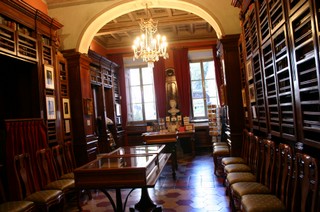 At home, he had had a sudden urge to cough, and noticed a drop of blood on the sheets. "That drop of blood is my death sentence", he told a friend. On September 13th, 1820, he left for Italy on board the ship Maria Crowther. He was headed to Naples, in search of a better climate to cure his disease. Unfortunately, such a miracle never came to pass, and Keats died in Rome, in the apartment in Piazza di Spagna, which is now a museum.
At home, he had had a sudden urge to cough, and noticed a drop of blood on the sheets. "That drop of blood is my death sentence", he told a friend. On September 13th, 1820, he left for Italy on board the ship Maria Crowther. He was headed to Naples, in search of a better climate to cure his disease. Unfortunately, such a miracle never came to pass, and Keats died in Rome, in the apartment in Piazza di Spagna, which is now a museum. 
